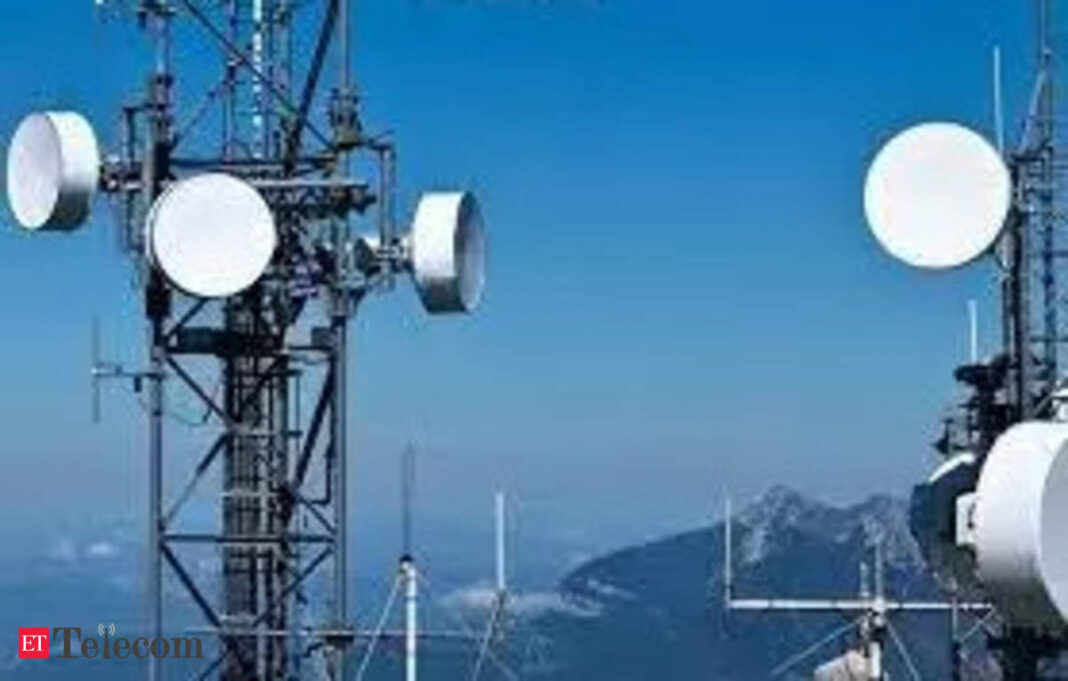In Short:
The BharatNet project, aimed at providing broadband to rural areas in India, is facing issues as expensive equipment is stored poorly in panchayat buildings. Originally started in 2011, costs have ballooned from ₹20,100 crore to over ₹1.39 lakh crore. Despite delays, the government plans to improve infrastructure and end-user connectivity, promoting universal internet access for economic growth and better 5G coverage.
Kolkata – Project hardware and supporting power infrastructure intended for one of the world’s largest rural broadband initiatives are currently stranded in panchayat buildings across numerous villages in India. This sophisticated broadband equipment, valued in the thousands of crores, remains confined in rooms alongside bags of fertilizers and pesticides, all within buildings that suffer from leaky roofs, subjecting them to moisture, heat, or cold, depending on the season.
Background of BharatNet
The ambitious BharatNet project was launched in October 2011 under the Congress-led UPA government as the National Optic Fibre Network (NOFN). Renamed BharatNet, the objective was to connect 250,000 gram panchayats and 640,000 villages via broadband as part of India’s vision for a Digital India. However, the project’s costs have escalated beyond the initial estimate of Rs 20,100 crore for NOFN. Subsequent projections in 2017 estimated the costs for phases 1 and 2 at Rs 42,068 crore, which ballooned by August 2023 to over Rs 1.39 lakh crore, including Rs 65,000 crore earmarked for phase 3, which is being implemented by the state-run Bharat Sanchar Nigam Limited (BSNL).
Current Status and Government Statements
The initial completion date for the project has long passed, with a target set for March 2017. Nonetheless, the government has maintained that there are no delays, asserting that the project’s scope has expanded during the ongoing third phase. In the previous month, 21 entities, including state-run Telecom Consultants India, ITI, and domestic optical fibre cable manufacturers such as HFCL, STL, Polycab, and Pratap Technocrats, submitted bids for the third-phase tender. Committees within BSNL were anticipated to complete the technical evaluation of these bids and submit their final reports by September 10.
Anticipation for Phase III Developments
Local telecom and optical fibre cable manufacturers involved in the phase 3 tender express optimism that price bids will be revealed soon, with contracts potentially awarded within the coming months. According to Telecom Minister Jyotiraditya Scindia, the BharatNet fibre network has already successfully connected 220,000 gram panchayats through the first two phases, with an additional 40,000 targeted for coverage under the amended initiative. The third phase aims to connect an additional 47,000 gram panchayats.
Organizational Changes and Challenges
Bharat Broadband Network Limited (BBNL), a special purpose vehicle, was established in 2012 by the Department of Telecommunications for the implementation of the NOFN. However, due to delays, the government opted to merge BBNL into BSNL in July 2022, which is now responsible for driving the BharatNet initiative. Currently, over 690,259 km of BharatNet optical fibre cable has been laid across the country.
Unidentified senior government officials attributed the time and cost overruns of BharatNet to initial planning flaws and subpar implementation. The decision to use gigabit passive optical network (GPON) technology has been criticized for resulting in quality and reliability issues that impeded the rollout. Moreover, inadequate storage and maintenance of project hardware at the village level, combined with a linear broadband rollout strategy that heightened vulnerability to fibre cuts, has disrupted connectivity.
Future Plans and Adjustments
To address these challenges, the government has instituted corrective measures including engaging professional agencies for timely construction, upgrades, and maintenance of the BharatNet fibre. The network’s architecture will transition to a ring topology, designed to better withstand fibre cuts via backup links to sustain service continuity. Additionally, the implementation of multiprotocol label switching (MPLS) technology is planned as a replacement for GPON, nine years after a panel of experts recommended it.
Expert Opinions and Economic Impact
Industry experts assert that, if executed correctly, the BharatNet fibre network could significantly boost the fibreization of telecom towers, thereby enhancing the quality of 5G coverage in India. BharatNet aims not only to extend high-speed fibre broadband connectivity to block headquarters but also to household levels, aiming for universal broadband access.
As identified by industry leaders, effective project execution is crucial for the success of such a vast initiative as BharatNet. Vinish Bawa, a partner at PwC India, emphasizes the need for governance and project management to guarantee adherence to timelines and milestones. Sanjeev Kumar, TCIL chairman and managing director, remarked that BharatNet could catalyze significant economic benefits if completed in a timely and qualitative manner, allowing service providers to utilize the infrastructure for critical services in rural India.
Telecom executives view BharatNet as a strategic driver for enhancing network infrastructure essential for improved 5G coverage. Currently, only 40% of India’s telecom towers are fiberized, a stark contrast to the 85-90% seen in countries like China, the US, the EU, and South Korea. The sharing of BharatNet’s fibre resources could bridge this gap and foster a mutually beneficial arrangement for industry and government, providing substantial revenue through fibre monetization, particularly in rural areas.





